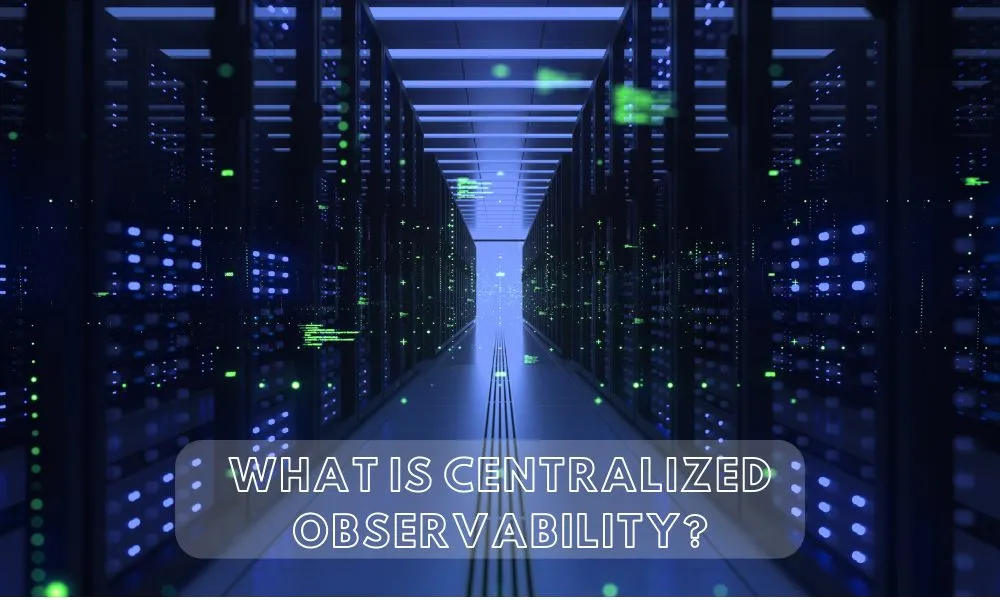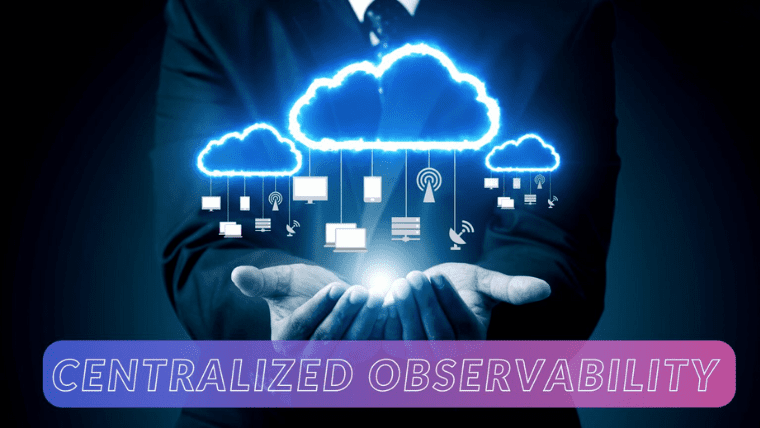Centralized Observability may not be a buzzword but its practicality and importance can’t be denied. Let’s see why is that.
As DevOps and IT teams recognize the importance of Observability, it becomes a critical component to monitor the stack and ensure data reliability.
That being said, enterprises are rapidly embracing modern data stacks to harness the power of data. Therefore, a host of platforms require data observability as a tool for reliable and trustworthy data management. Though there are plenty of vendors out there, not all of them can keep up as data grows in volume and variety.
Centralized Observability emerges as an ideal solution for multiple reasons, summarized in short as follows:
- Universal Data Support
- End-to-End Monitoring
- Stack Flexibility
- Automated Data Quality
- Consistent Data Metrics
- Ease of Operation
- Cost Management
In this article, we will delve into the concept of centralized data observability, its significance, and explore the reasons why it should be implemented within Multi-Cloud Environments.
What is Centralized Observability?

Centralized observability goes beyond monitoring the data stack of a specific application.
It’s about getting all data from everywhere and not just the stack of a particular application.
In other words, it involves aggregating data from various sources, ensuring comprehensive monitoring across the entire data pipeline, from data ingestion to consumption. This approach facilitates monitoring structured and semi-structured data across multiple systems, including data warehouses, data lakes, message queues, and streaming sources.
Moreover, a centralized data observability platform supports multiple data formats from JSON, to CSV and to parquet, making it highly versatile and adaptable.
Benefits of Centralized Observability
Centralized Observability plays a crucial role in monitoring and ensuring data reliability within modern data stacks.
1. Universal Data Support: Centralized Observability provides support for diverse data sources, accommodating the growing volume and variety of data.
2. End-to-End Monitoring: It offers comprehensive monitoring capabilities across the entire stack, enabling teams to gain insights and address issues throughout the data pipeline.
3. Stack Flexibility: It can seamlessly adapt to changes in the technology stack, allowing for the addition or migration of systems without compromising data quality definitions.
4. Automated Data Quality: It automates the monitoring and assessment of data quality, ensuring consistent and reliable data across different platforms and systems.
5. Consistent Data Metrics: Centralized Observability platforms employ their own computation engine to calculate metrics, ensuring consistency and accuracy.
6. Ease of Operation: It simplifies the management and operation of data observability, providing a centralized platform that can be easily integrated and used across multiple systems.
7. Cost Management: By centralizing observability, organizations can optimize resource usage and reduce costs associated with deploying and maintaining separate monitoring solutions for each system.
Why you should implement Centralized Observability?
Data pipelines have grown in complexity over the years. As the number of integrations and data complexity increases in the stack, handling it becomes sophisticated as well.
A centralized data observability platform can operate simultaneously with the modern data stack, guaranteeing data trust at every stage and across diverse sources and transformations.
Centralized Observability has become crucial in modern data stacks due to the following reasons:
1. Comprehensive Data Monitoring: Centralized observability consolidates data from multiple sources to provide a holistic view of the data pipeline, enabling teams to detect issues, anomalies, and inconsistencies at various stages and ensuring enhanced data quality and system reliability.
2. Data Quality KPIs: A centralized observability platform establishes and monitors Data Quality Key Performance Indicators (KPIs) consistently across all DataOps systems. This shared understanding of data quality standards enables proactive identification and resolution of data issues, leading to improved decision-making and business outcomes.
3. Streamlined Data Operations: Implementing a centralized observability platform simplifies data management by replacing fragmented tools with a single platform. The streamlining of data reduces complexity, fosters collaboration among stakeholders, and improves overall operational efficiency.
4. Swift Issue Detection and Resolution: Real-time monitoring capabilities of centralized observability enable prompt detection and resolution of data discrepancies and anomalies. Continuous data analysis allows teams to address issues swiftly, minimizing disruptions and maintaining data ecosystem integrity.
5. Scalability and Future-Readiness: A centralized observability platform is designed to accommodate growing data volumes, diverse data sources, and evolving data formats. It can adapt to changing data requirements, ensuring effective monitoring and quality assurance in the face of technological advancements and expanding data landscapes.
Creating a Centralized Observability Platform with Apica
Apica offers a robust solution for storing and analyzing vast amounts of data, making it an ideal choice for building a centralized observability platform that monitors your entire infrastructure.
Let’s explore the process of building a centralized observability platform using Apica, covering the following key topics:
1. Data Collection from Infrastructure:
Efficiently gather data from various sources such as logs, metrics, and events across your infrastructure.
2. Data Storage and Indexing in Apica:
Store and index data in Apica, leveraging its scalability, fault tolerance, and user-friendly interface.
3. Data Searching and Analysis:
Utilize Apica’s powerful query language to easily search for specific data and apply statistical methods for data analysis.
4. Data Visualization:
Leverage Apica’s diverse set of visualization tools to gain insights and identify trends within your data.
Data Collection from Your Infrastructure
The initial step in constructing a centralized observability platform involves collecting data from your infrastructure. This involves gathering data from various sources, including logs, metrics, and events.
Once data is collected, it must be stored in a centralized location. Apica is an optimal choice for storing observability data due to its scalability, fault tolerance, and user-friendly interface.
Data Storage and Indexing in Apica
Data Searching and Analysis
With indexed data, Apica empowers users to efficiently search and analyze their data. Its robust query language enables precise data searches, and statistical methods can be applied for in-depth analysis.
Data Visualization
Apica provides a variety of visualization tools that facilitate comprehensive data visualization. These tools aid in better understanding the data and identifying significant trends.
The following are a few examples illustrating how Apica can be employed to construct a centralized observability platform:
1. Collecting and storing application logs in Apica, enabling quick searches for specific log messages.
2. Gathering and storing infrastructure metrics in Apica, facilitating infrastructure health monitoring and identification of performance issues.
3. Capturing and storing events from the infrastructure, allowing for the tracking of event flow and identification of potential security threats.
To learn more about building Apica’s centralized observability platform, you can visit the Apica website.
Summing it Up
It’s challenging for traditional data observability platforms that are specific to a single system to keep up with the developments in the multi-cloud domain. Not to mention the exuberant innovations with modern data stacks have led to a surge in new data, analytics, and ML platforms.
Most platforms often rely on system-specific metadata and logs, which can make it difficult to transition to other systems.
A centralized data observability platform is a better solution for multi-cloud architectures. Centralized platforms are agnostic to the systems in that they monitor and calculate metrics without relying on the metadata of underlying data stores. This makes it easy to onboard new systems and migrate between them.
A centralized data observability platform is also essential for ensuring trust in data. The complexity of modern data pipelines and the integration of multiple systems and platforms can make it difficult to track the lineage of data and identify errors. A centralized data observability platform can help to visualize the data flow and identify potential problems.
By providing a comprehensive view of the data landscape, a centralized data observability platform can help organizations to make better decisions about data. It can also help to improve the quality of data and reduce the risk of errors.
Organizations can achieve comprehensive data monitoring, establish and enforce data quality standards, streamline data operations, detect and resolve issues swiftly, and ensure scalability and future readiness by implementing a centralized data observability platform.
With reliable and trustworthy data, your business can make informed decisions, gain a competitive edge, and unlock the full potential of your data-driven initiatives.








